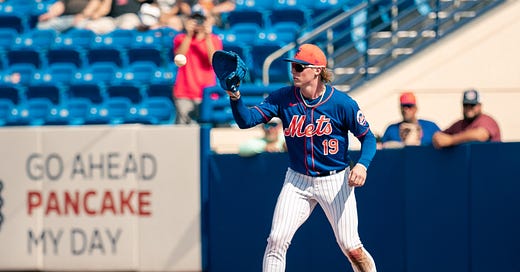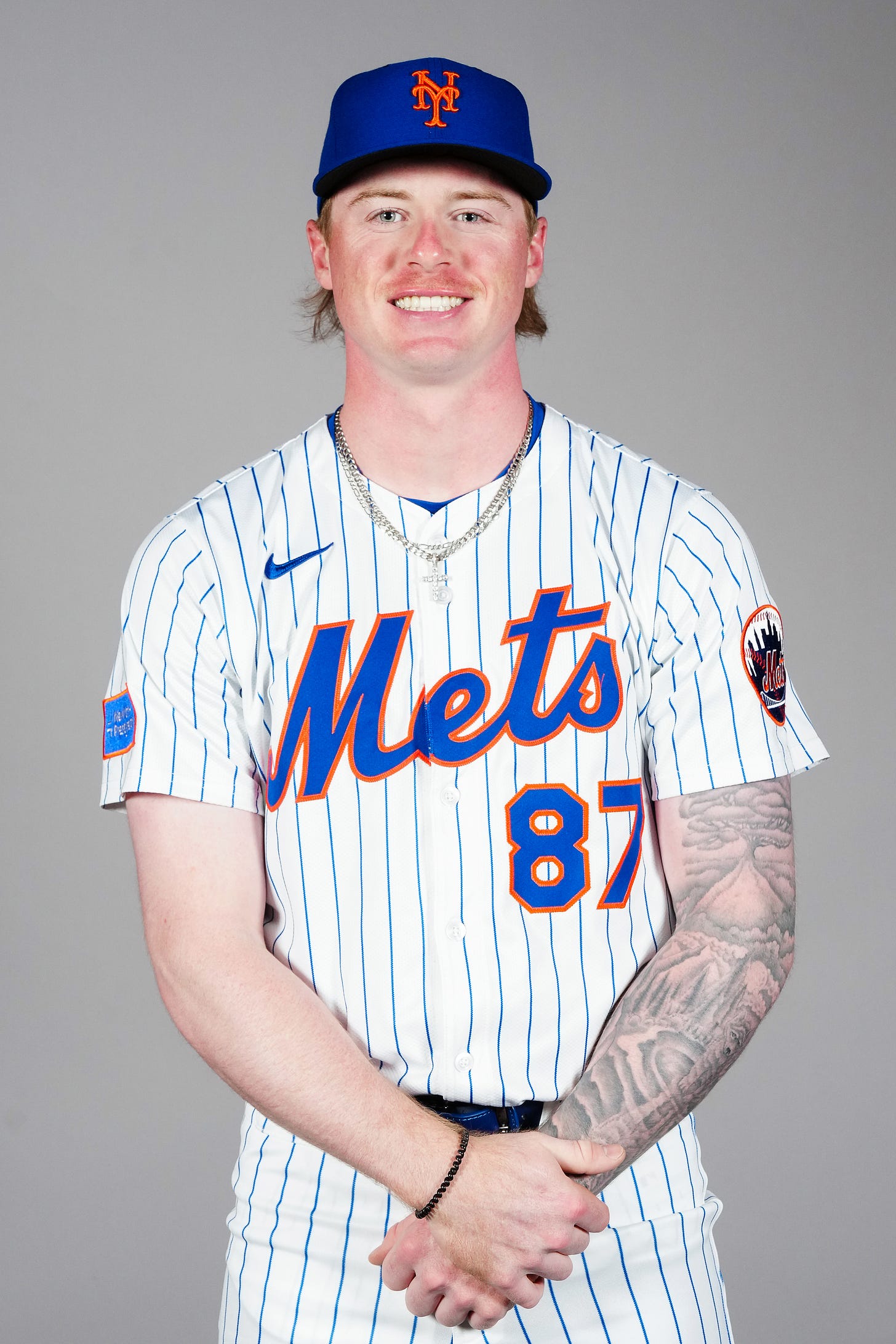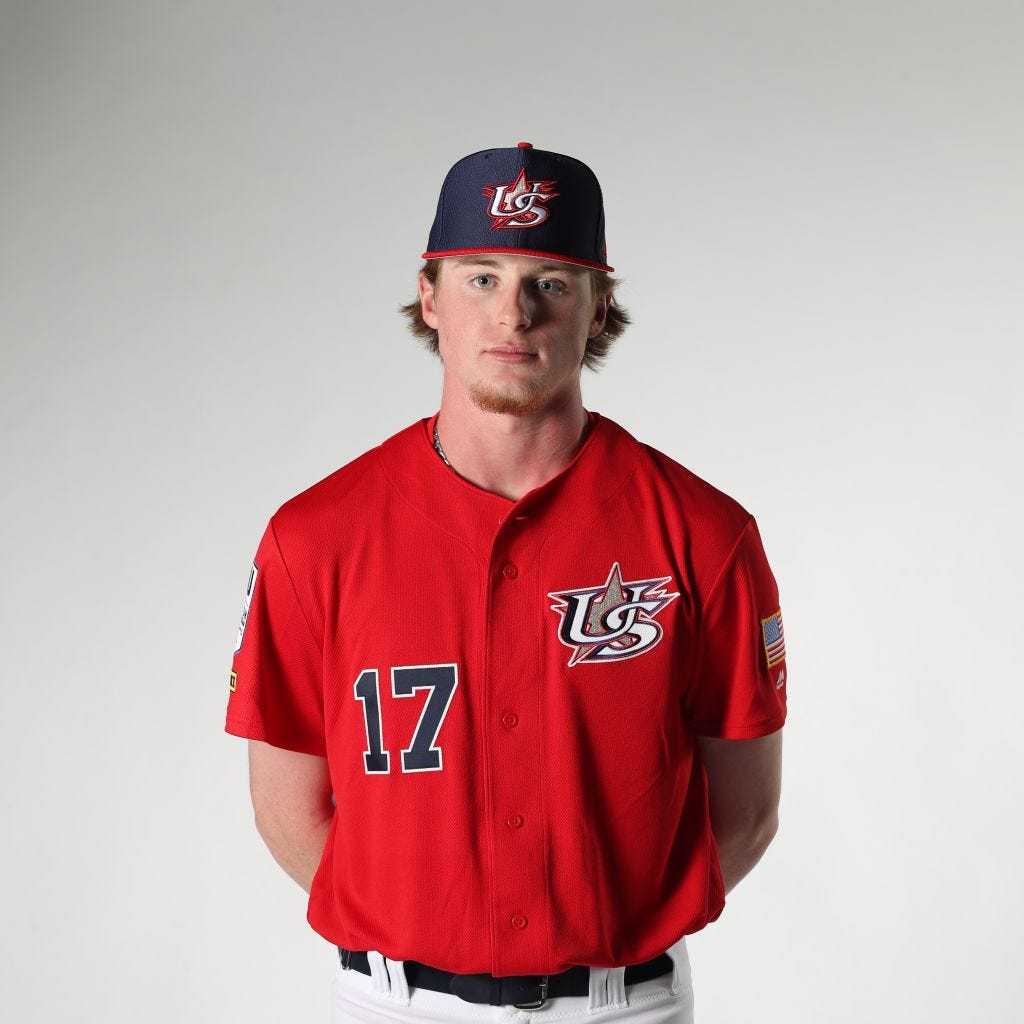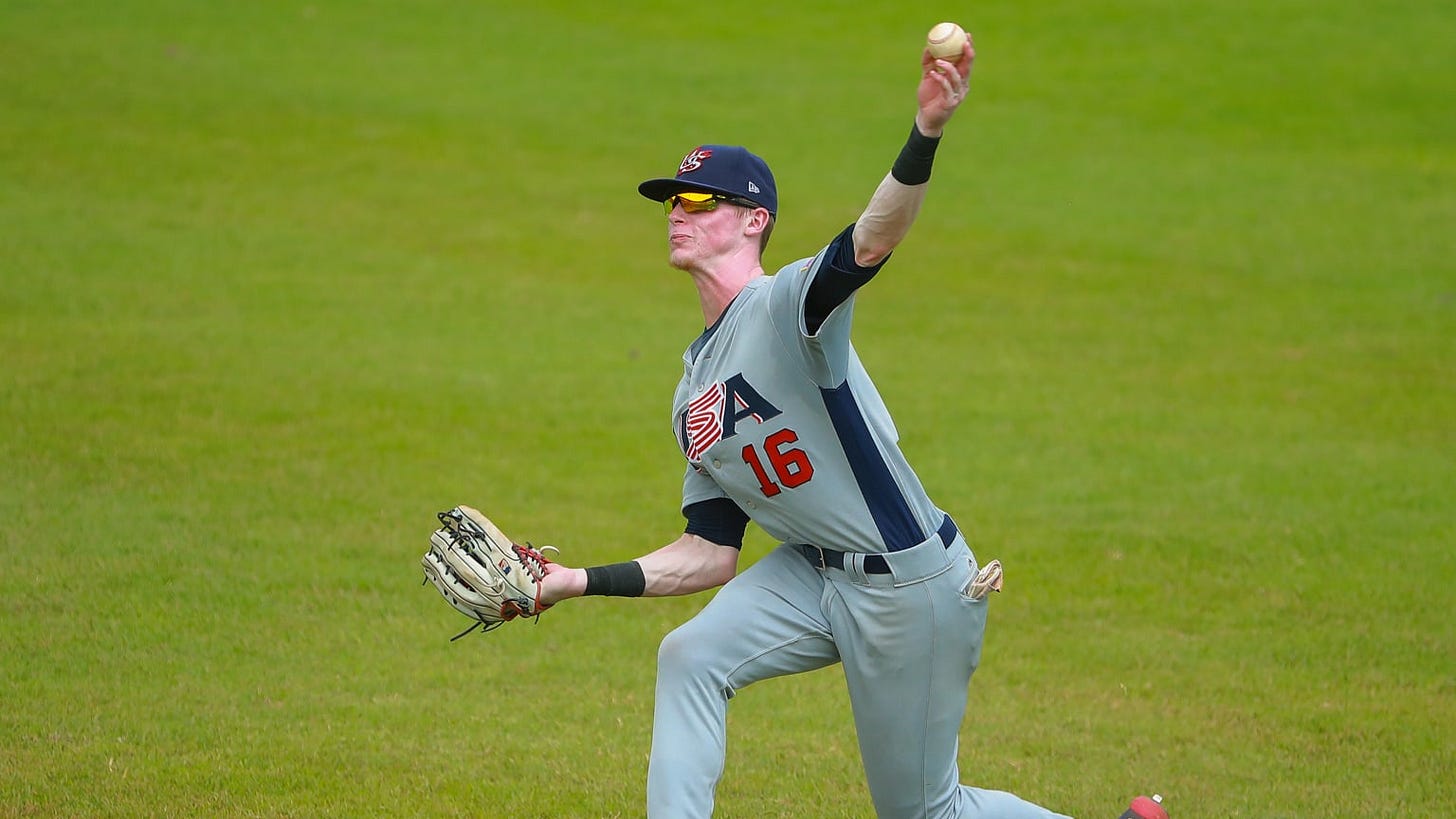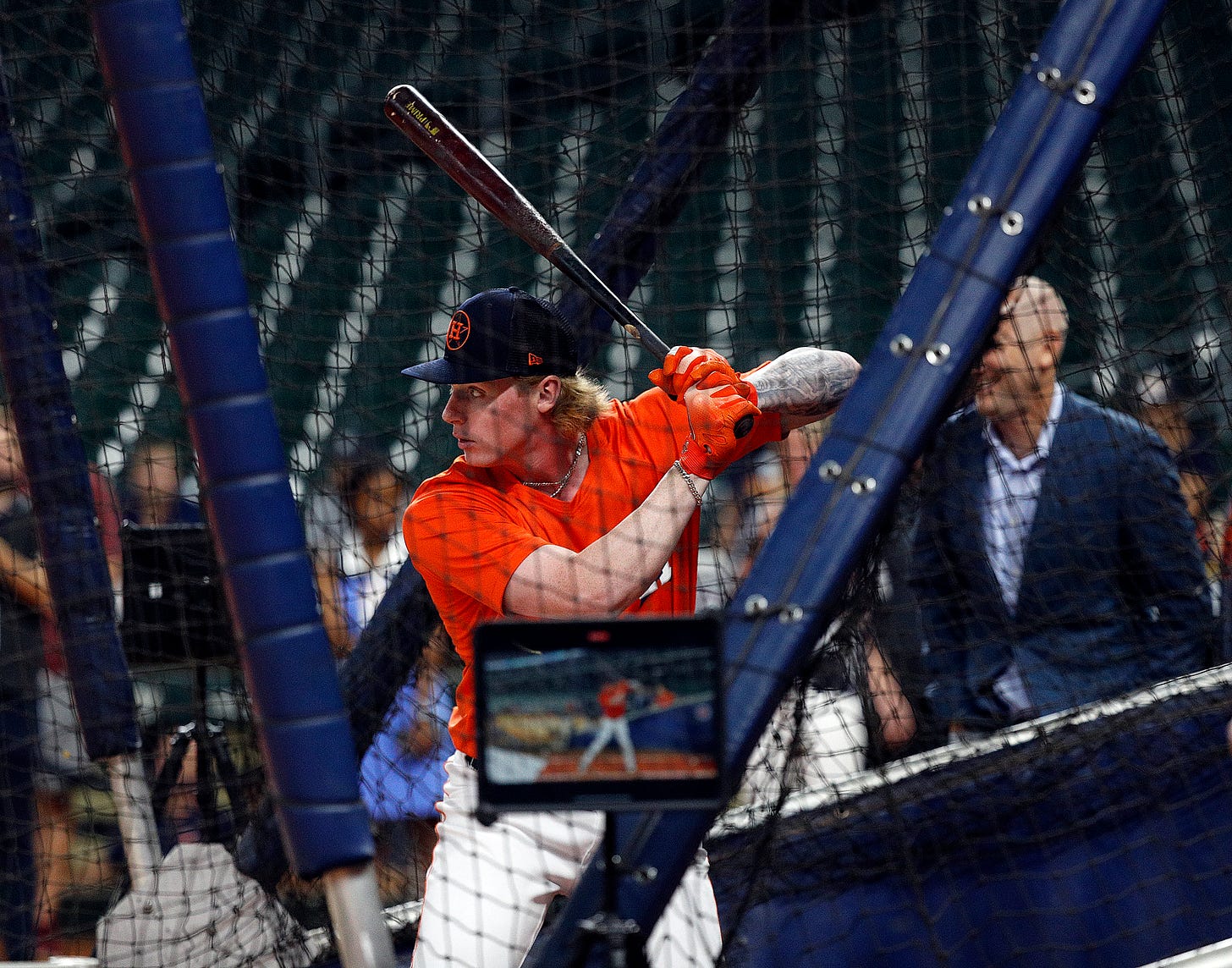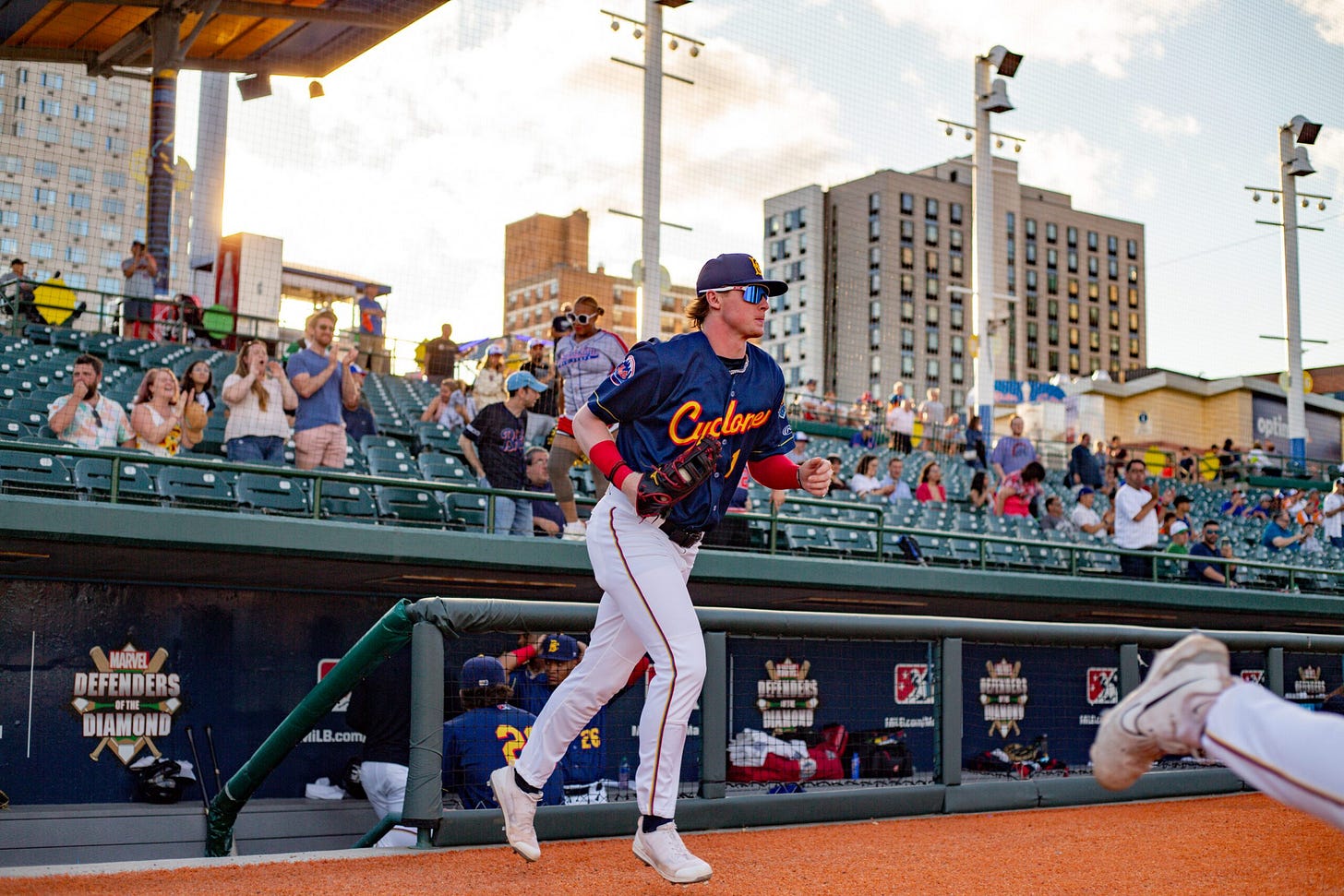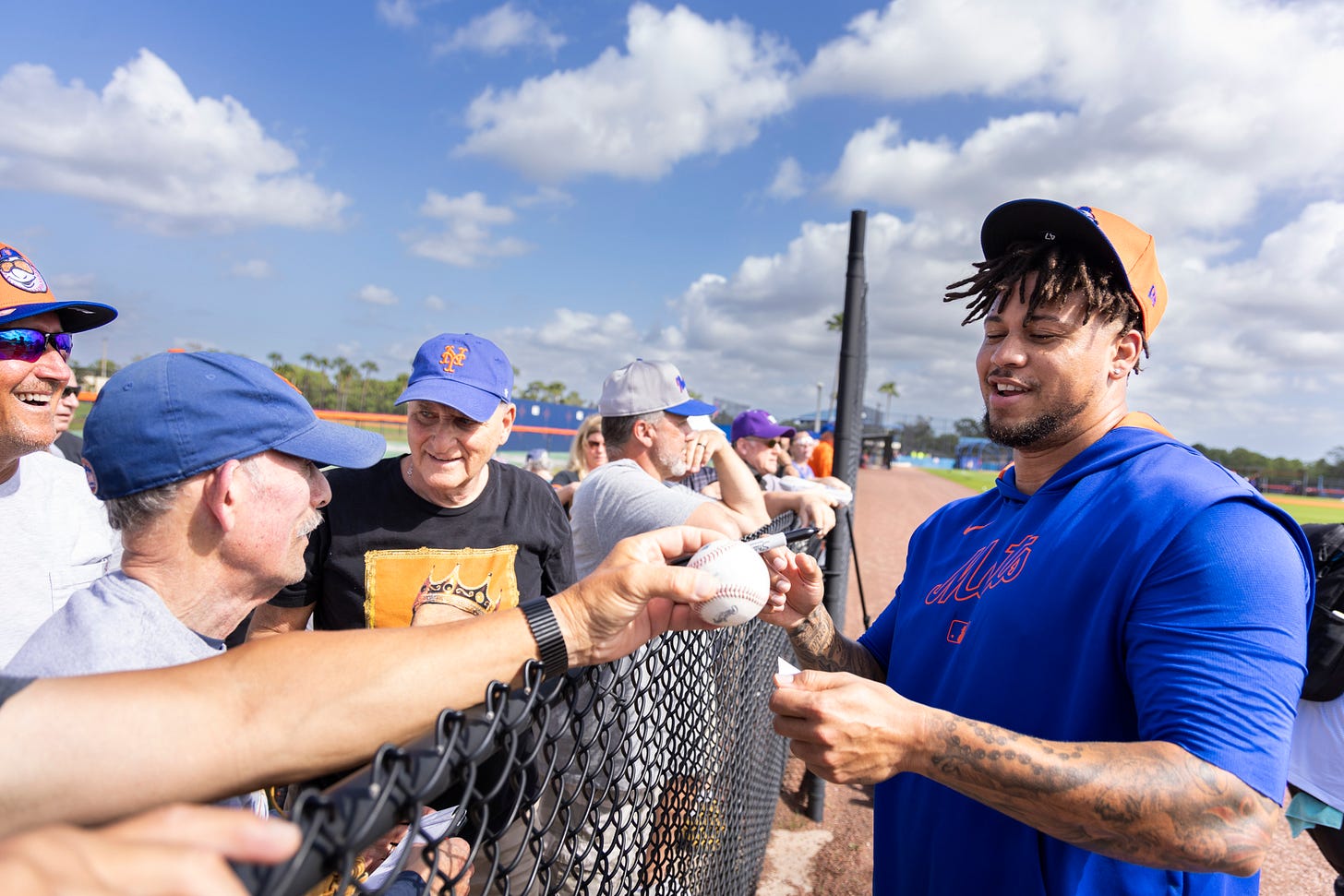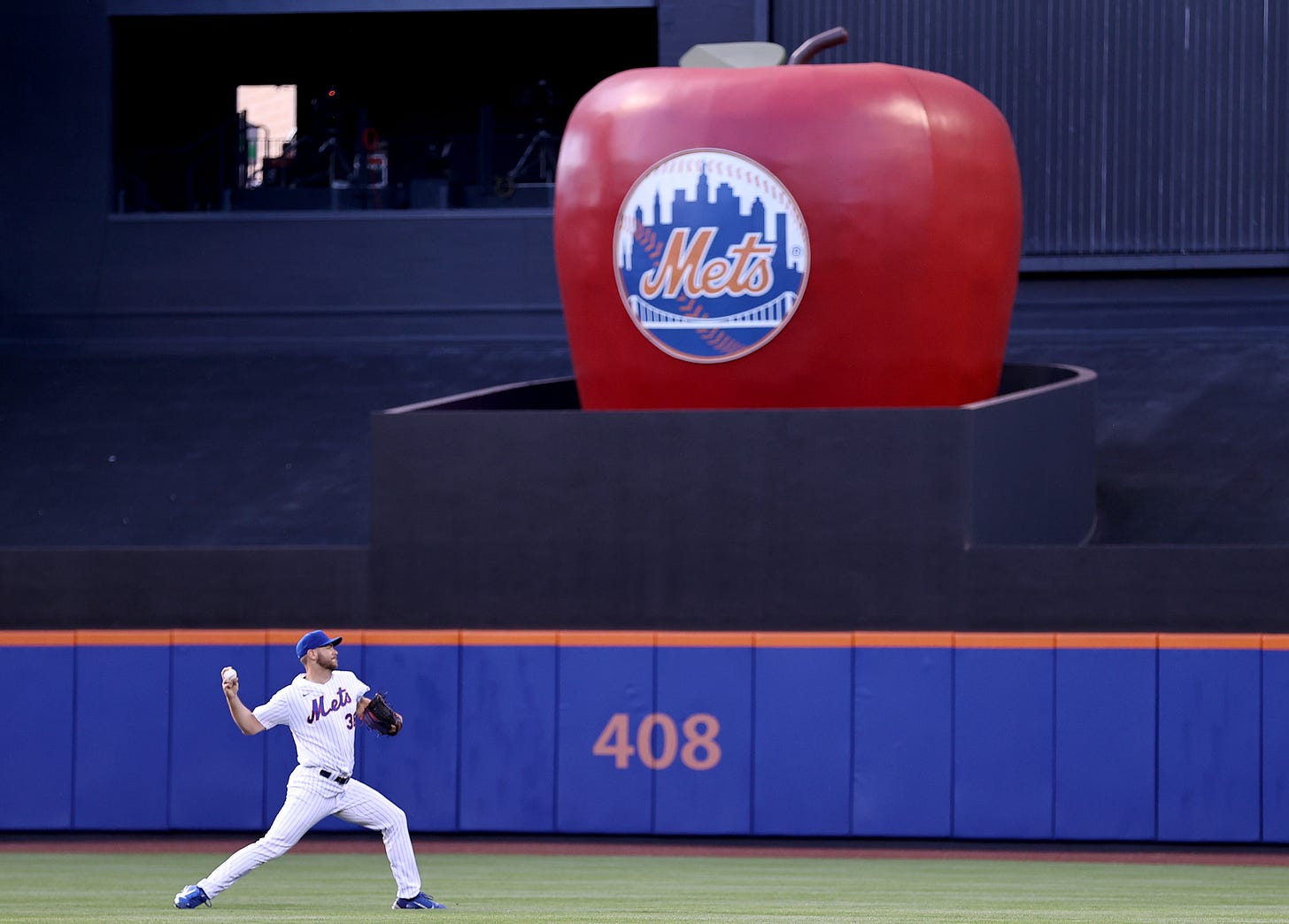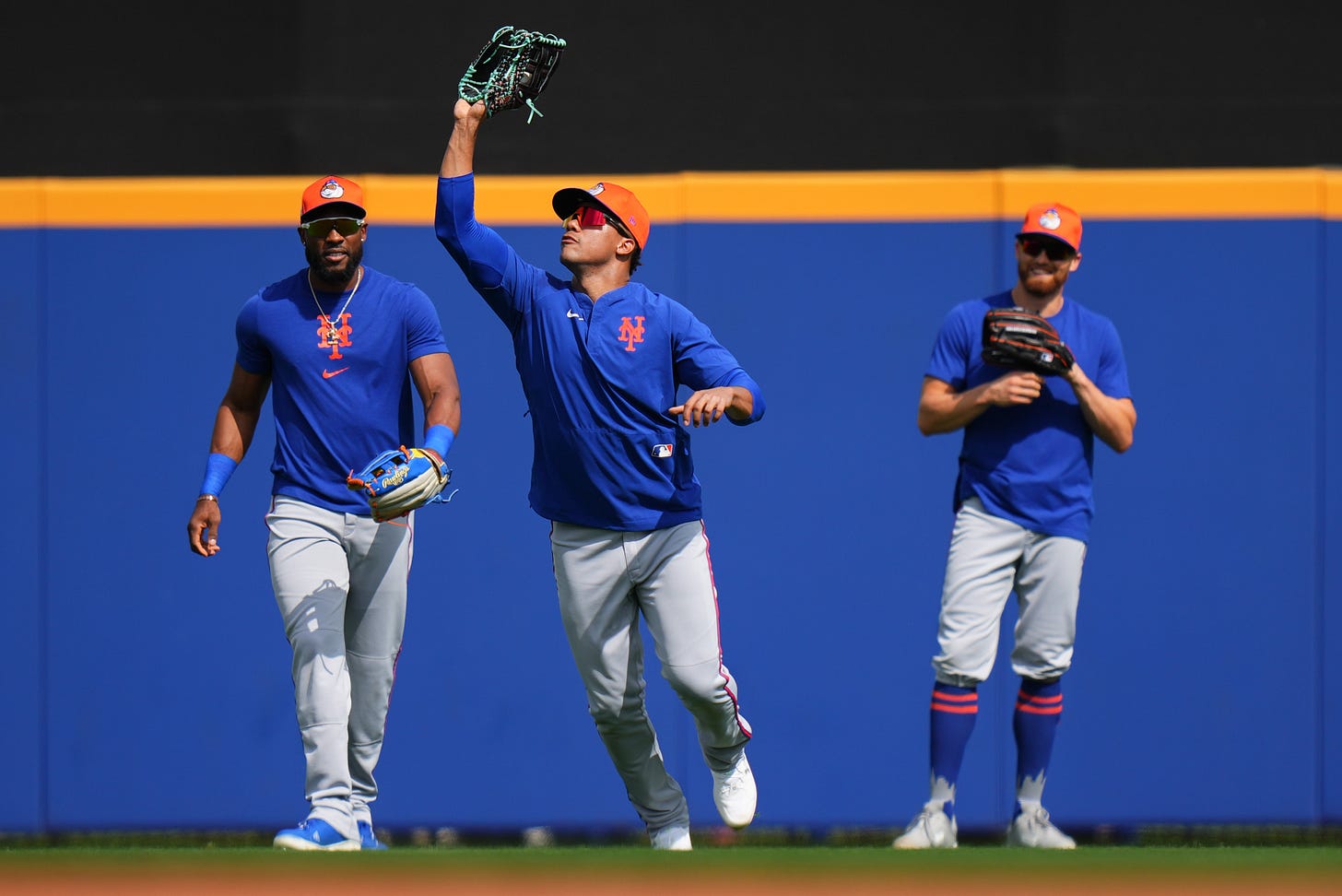Prospect Deep Dive: Ryan Clifford
Hit: 45 | Power: 60 | Run: 40 | Arm: 55 | Field: 45 | Overall: 55
Spring is in the air.
With the Mets’ first spring training game tomorrow, there’s a lot at every level to be excited about. In terms of the most common prospect names you may hear — making for ten weeks of prospect deep dives to date — another is Ryan Clifford.
Ryan Clifford, 21, is 6’3, 200 pounds and in an intriguing spot. He’s had the spotlight on him for a while, playing highly competitive baseball long before he was a thought to the Mets and their fans.
Clifford is from Raleigh, North Carolina, where he attended Leesville Road High School. While working out at Pro5 Academy year round in the same town, Clifford transferred to Crossroads FLEX High School in Cary, North Carolina.
From a very early age, even before high school, Clifford was viewed as one of the better bats in his class.
I know Team USA is a sore spot if you’re a hockey fan this week.
Clifford’s had six different (baseball) stints with Team USA — from his first as a member of the 12U National Team. If you’re playing on Team USA at 12 years old — safe to say you’re pretty good.
In eight games, Clifford had seven hits, 5 RBI, holding a .350 AVG and a .480 OBP. He scored six times for a team that went 8-1 and won gold at the 2015 WBSC U-12 World Cup in Tainan, Taiwan.
In 2017, at the age of 14, Clifford was a member of the USA Baseball National Team Development Program. The purpose of the program is to help the organization identify players for individual national teams, which is where Clifford played again for the following season.
In 2018, at the age of 15, Clifford started all nine games of the WBSC U-15 Baseball World Cup, all in right field. He registered an RBI in each of USA’s first four games, — a walk in each of their last five — finishing with a .304 average and a .452 OBP.
The next year for Clifford began his 2019 with the 16U National Team Development Program and was promoted to the 17U program within the same year.
The following season, Clifford was a member of the 18U National team in 2021. They finished the year with a 5-1-1 overall record, while Clifford made seven appearances and started six games, slashing .200/.360/.300 with a team-best two doubles in the tournament.
In November of 2020, Clifford committed to Vanderbilt University. The COVID pandemic in March pushed Clifford back to the 2022 MLB Draft, where MLB Pipeline ranked him the 92nd overall prospect in the 2022 class.
Clifford was drafted by the Houston Astros in the 11th round of the 2022 Major League Baseball draft. He ended up signing for a slot value of $1,256,530, equated to fall between the 58th and 59th pick.
Funny enough, the only player which Houston gave a higher signing bonus that draft — current Met, and former first round pick, Drew Gilbert.
Clifford spent his first professional season with the Florida Complex League Astros and the Low-A Fayetteville Woodpeckers. Appearing in 13 games for the FCL Astros Orange, Clifford slashed .222/.440/.389 with 3 doubles, 1 home run, 2 stolen bases, and 12 walks to 16 strikeouts.
Starting 2023 with 25 games in Fayetteville, Clifford slashed .337/.488/.457 with five doubles, two home runs and 15 RBI. Clifford was promoted quickly to High-A Asheville, where he’d play 58 games, hitting 16 home runs and tacking on 46 RBI.
On August 1, 2023, Ryan Clifford and Drew Gilbert were traded to the New York Mets in exchange for Justin Verlander.
Beginning his 2024 in High-A with the Brooklyn Cyclones, Clifford struggled — slashing .216/.412/.304 and one home run across 31 games. At Maimonides Park in Brooklyn, the crosswind coming off the Atlantic Ocean blows in from right field, making it tough on left handed hitters to find pop.
Last May, the Mets promoted Ryan Clifford and Brandon Sproat together to Double-A Binghamton. While he didn’t prove much to deserve a promotion, the Mets knew it was likely a product of Clifford’s environment.
You can certainly make the case that Clifford eventually found his power stroke, hitting 18 home runs across 98 games, with a 133 wRC+ and a .225 ISO.
In terms of a slash line — Clifford hit .231/.359/.457 with 21 doubles, 3 stolen bases, and a BB/K ratio of 63/117. In totality, Clifford’s 95 walks to 160 strikeouts was the best in the minor league system, and his home run and strikeout numbers placed him 3rd in the minors, respectfully.
What makes Clifford interesting is his raw power. His plate approach has always been fairly advanced for his age, being decisive on which pitch he chooses to attack. There’s some complacency which Clifford is susceptible of falling into; instances of being too selective, falling behind in the count, increasing his inclination to swing and miss. Cutting down on chasing can help take Clifford’s game to another level.
In the field, Clifford plays the outfield and first base — but doesn’t necessarily add much plus value at either position.
While he has a strong arm, certain routes to the ball in the outfield and reactionary plays at first base offer opportunity for Clifford to drastically improve. If there is anything preventing him from being called up to Triple-A Syracuse — besides Joey Meneses and JT Schwartz — it would be his defense. The same way Lucas Duda played a little outfield before going to first base, I could see Ryan Clifford getting a similar runway.
In summary — he’s still a prospect for a reason.
This spring, Clifford’s swing sure looks sweet. Reminds you slightly of Bryce Harper.
(Courtesy of SNY)
Moving forward and looking ahead — the Mets could value Ryan Clifford as the long-term replacement to Pete Alonso at first base.
The only thing that Clifford currently has over Alonso is left-handedness — both on the field, and at the plate. While it may not sound like a lot, being a lefty ultimately ends up being a difference maker if all else is equal — for a player-to-player decision down the line, not necessarily just between Clifford and Alonso.
In the modern era (since 1901) only 35% of first baseman have been left handed. If Clifford can find his way to Triple-A at any point this year — that’s a step in the right direction.
Given that Alonso could opt-out at the end of this year, the Mets have to continue to watch the position — especially if they don’t get Vladimir Guerrero Jr. in free agency. Given Steve Cohen’s comments this week, it doesn’t sound likely, for now.
Depending on who you ask, Frankie Montas’ injury was a shock.
Also depending on who you ask, the Mets are going with a six man rotation.
With Frankie Montas on the foreseeable shelf, the Mets rotation was built for depth. Carlos Mendoza has preached depth often, and the Mets do have it in Paul Blackburn, Griffin Canning, and Tylor Megill.
That mix, essentially, seems to be conglomerate to see what the sixth starter will be. There’s three early off-days until the 18th game of the season, allowing for at least five days of rest for the rotation. Weather is always an unknown, but the known of being without Montas now breeds a competitive battle.
Of the three, Megill has the better stuff and higher upside; but has one minor league option remaining. Griffin Canning and Paul Blackburn do not, which is where they have a potential advantage. If you’re optioned down to begin the year, you can be called up or down an unlimited amount of times throughout the season. For Megill, it may be better to play the long game in order to solidify his opportunity down the line.
There was an interesting idea proposed by Joel Sherman this week — suggesting the possibility of a regular season Opening Day start from Clay Holmes. Starting the spring training opener tomorrow, Holmes is expected to see three “ups” and 40-45 pitches.
If there was a dark horse in this rotation, it’s Clay Holmes.
Tinkering with a cutter and changeup, Holmes needs to add those two pitches to his arsenal in order to be effective in the rotation. You can get away with three — but it’s not ideal. Holmes’ current sinker/slider mix is extremely effective against righties.
The main objective, seemingly, is to find expansion opportunities during Holmes’ transition to a starter for going deeper into games. Proving that he can go through an order not just two times, but three. Control, not stuff, has always been Holmes’ issue.
Regardless, Sean Manaea or Kodai Senga are the two top candidates to get the ball on March 27th in Houston — and both would be a problem.
But, by baseball conversation standards in February, it’s a compelling one.
Still doesn’t feel real seeing that Juan Soto’s a Met. It won’t for a long time.
In terms of offensive additions, the Mets are completely set. Both Jose’s — Iglesias and Quintana — seem to be left in 2024, and out of 2025. I still think Jose Iglesias is the likelier to return of the two. In terms of the utility role mix currently on the Mets that Iglesias would be competing: Brett Baty, Jared Young, Nick Madrigal, and Luisangel Acuña.
With 31 games of Mets spring training ahead, the first one starts tomorrow.
Scouting Report, Ryan Clifford:
“Regardless of where he played, Clifford ended 2023 with 24 homers, tied for second-most among Minor League teenagers. His uphill bat path helps him get the most of his significant raw pop, and it plays well to all fields. In fact, he may have gone oppo a little too much in ’23 and could increase the power by aiming for more pulled balls. It certainly helped him to get away from Coney Island with a first-half promotion to Double-A Binghamton this summer. He has high three-true-outcome potential with good walk rates but also his share of swing-and-miss issues.”
“Clifford has just fringy speed, and while his arm strength could certainly play in a corner outfield spot, both the Astros and Mets gave him ample looks at first base where his lack of quickness is less of a concern. He still has some room to grow defensively there too, but his bat is so good that some evaluators preferred him over Drew Gilbert in the Verlander trade.”


